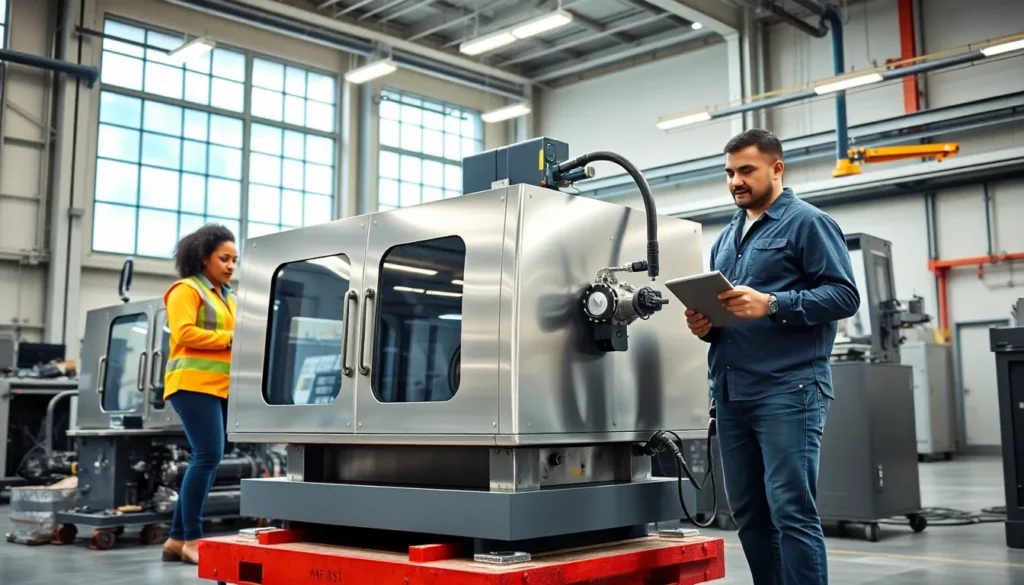In an ever-evolving business landscape, maintaining bed stability is crucial for ensuring consistent performance and reliability. Whether in manufacturing, logistics, or digital platforms, a stable bed system serves as the foundation for operational success. Recognizing its significance allows businesses to optimize their processes and adapt to changing demands. This article explores the nuances of bed stability, its impact on business operations, and how professionals can enhance and monitor this essential stability.
Table of Contents
ToggleUnderstanding Bed Stability

Bed stability refers to the ability of a system, be it physical or digital, to maintain its position and functionality without undue movement or disruption. This concept is often employed in manufacturing and logistics, where the precise alignment of machinery or equipment is vital for seamless operations. In the context of digital systems, bed stability relates to the reliability and performance of online platforms, ensuring that they can handle user demands efficiently without glitches or downtime.
More than just a technical term, bed stability encompasses various aspects of a business’s operational integrity. In manufacturing, bed stability can imply the alignment of machinery, while, in digital realms, it can mean servers that handle multiple tasks without failure. Understanding these definitions lays the groundwork for deeper discussions on the importance and methodologies to achieve optimal bed stability.
Importance of Bed Stability in Business
The significance of bed stability extends beyond mere mechanics: it plays a pivotal role in defining a business’s overall efficacy and growth potential. For manufacturers, stable equipment results in increased productivity and reduced error rates. A single misalignment can cause production delays, leading to financial losses and compromised client relations.
In the digital arena, bed stability ensures that websites, applications, and services operate smoothly, enhancing user experiences. A stable platform can manage high traffic without crashing, so fostering consumer trust and engagement. When businesses invest in bed stability measures, they not only boost efficiency but also build a reputation for reliability that attracts more customers.
Key Factors Affecting Bed Stability
Several elements affect bed stability, each of which requires careful consideration. Key factors include:
- Alignment: The correct positioning of machinery and tools to prevent mechanical failures.
- Materials: Durable materials resist deformation and wear, contributing to overall stability.
- Dynamic Loads: Understanding the impact of varying loads on equipment helps maintain stability.
- Environmental Factors: Temperature, humidity, and vibration can disrupt both physical and digital beds.
Techniques for Enhancing Bed Stability
To enhance bed stability, businesses can adopt various strategies:
- Regular Maintenance: Regularly scheduled inspections and maintenance of machines ensure they remain functional and correctly aligned.
- Calibration: This technique guarantees that all components of the system are operating according to specified parameters, leading to better performance.
Tools and Technologies for Monitoring Stability
Employing advanced tools and technologies can help monitoring bed stability. For instance, vibration sensors can detect unusual oscillations in machinery, alerting operators to potential issues before they escalate. In digital environments, performance monitoring software can track server uptime and responsiveness, thereby identifying any stability concerns immediately.
Case Studies: Successful Bed Stability Implementations
Various companies have successfully implemented strategies to maintain bed stability, showcasing the profound benefits of focusing on this aspect.
One prominent example is an automotive manufacturing plant that invested in state-of-the-art alignment tools. By conducting regular maintenance checks and recalibrating machinery, the plant improved its production efficiency by 30%, greatly reducing downtime and operational costs.
Challenges in Maintaining Bed Stability
Even though its importance, businesses often face challenges when it comes to maintaining bed stability. Factors such as fluctuating demands, varying quality of materials, or unexpected environmental conditions can disrupt stability. A company that manufactures electronic products, for instance, experienced stability issues due to inconsistent supply of components, leading to operational delays and increased costs. Addressing such challenges requires resilience and adaptability, enabling organizations to respond effectively and maintain stability even though external pressures.
Future Trends in Bed Stability Management
As technology evolves, so too do the methods for ensuring bed stability. Future trends indicate a shift towards more integrated systems that use artificial intelligence and machine learning to monitor and enhance stability automatically. Predictive analytics could play a role in anticipating potential stability issues before they materialize, providing businesses with a proactive approach to maintaining bed integrity.
Besides, the rise of remote monitoring technologies means that businesses can oversee their bed stability from virtually anywhere. This will allow for rapid response to any stability concerns, ensuring minimal interruptions in operations.
Conclusion
Mastering bed stability within business operations is essential for both immediate and long-term success. By understanding its significance, exploring successful case studies, and keeping abreast of emerging trends, organizations can enhance their operational frameworks significantly. Investing time and resources into bolstering bed stability not only influences productivity but also solidifies a business’s reputation for reliability in a competitive marketplace.





